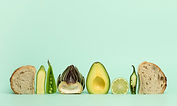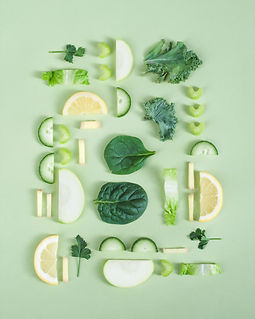Neutropenia During Cancer Treatment
Neutropenia is a decrease in the number of a type of white blood cell called neutrophils.
White blood cells are our primary defense against infections. Hence, low white blood cells put you at risk of infections.
Neutropenia is a common side effect of different chemotherapy drugs, and it often develops 7 to 12 days after a person receives chemotherapy.
Your doctor will tell you exactly when your white blood cell count will likely hit its lowest level, and it would be best to watch closely for signs and symptoms of infection during this time.
There is not much you can do to prevent neutropenia; however, you can decrease your risk of infection while your white blood cell count is low by washing your hands often and well, keeping catheters clean, and staying away from people who are sick or have a cold. It is important to follow food safety guidelines to reduce the risk of contracting infections.
What Foods to Eat with Neutropenia
The neutropenic or low bacterial load diet is a diet for people with suppressed immune systems who are at increased risk of infections from microbes present in food.
This diet aims to minimize the entry of pathogenic organisms through the gastrointestinal tract through food while looking for healthy options to optimize nutrition. It involves choosing foods and preparing them safely to minimize the risk of foodborne infection.
The American Cancer Society recommends the following tips for handling, planning, and preparing food when your immune system is recovering:
Food-Handling Tips
-
Wash your hands with warm, soapy water for 20 seconds before and after preparing food and before eating.
-
Refrigerate foods at or below 40° F.
-
Keep hot foods hot (warmer than 140° F) and cold foods cold (cooler than 40° F).
-
Use defrosted foods right away, and do not refreeze them.
-
Rinse leaves of leafy vegetables one at a time under running water.
-
Throw away eggs with cracked shells.
-
Throw out foods that look or smell strange. Never taste them!
-
Thaw meat, fish, or poultry in the microwave or refrigerator in a dish to catch drips. Do not thaw at room temperature.
Do Not Cross-Contaminate
-
Use a clean knife to cut different foods.
-
In the refrigerator, store raw meat sealed and away from ready-to-eat food.
-
Keep foods separated on the countertops. Use a different cutting board for raw meats.
-
When grilling, always use a clean plate for the cooked meat.
-
Clean counters and cutting boards with hot, soapy water, or you can use a fresh solution made of 1 part bleach and 10 parts water. Moist disinfecting wipes may be used if they’re made for use around food.
Cook Foods Well
-
Put a meat thermometer into the middle of the thickest part of the food to test for doneness. Test a thermometer’s accuracy by putting it into boiling water. It should read 212° F.
-
Cook meat until it’s no longer pink, and the juices run clear. The only way to know for sure that meat has been cooked to the right temperature is to use a food thermometer. Meats should be cooked to 160° F and poultry to 180° F.
Grocery Shopping
-
Choose unblemished fruits and vegetables.
-
Do not eat foods that are bought from self-serve or bulk containers.
-
Do not eat yogurt and ice cream products from soft-serve machines.
-
Do not eat free food samples.
-
Do not use cracked or unrefrigerated eggs.
-
Refrigerate groceries right away. Never leave food in a hot car.
-
Check “sell-by” and “use-by” dates. Do not buy products (including meats, poultry, or seafoods) that are out of date. Pick only the freshest products.
-
Do not eat deli foods. In the bakery, avoid unrefrigerated cream- and custard-containing desserts and pastries.
-
Do not use damaged, swollen, rusted, or deeply dented cans. Be sure that packaged and boxed foods are properly sealed.
-
Get your frozen and refrigerated foods just before you check out at the grocery store, especially during the summer months.
Dining Out
-
Eat early to avoid crowds.
-
Ask that food be prepared fresh in fast-food restaurants.
-
Ask for single-serving condiment packages and avoid self-serve bulk condiment containers.
-
Do not eat raw fruits and vegetables.
-
Ask for pasteurized fruit juices. Avoid “fresh-squeezed” juices in restaurants.
-
Be sure that utensils are set on a napkin or clean tablecloth or placemat, rather than right on the table.
-
If you want to keep your leftovers, ask for a container, and put the food in it yourself rather than having the server take your food to the kitchen to do this.
-
Do not eat from high-risk food sources, including salad bars, delicatessens, buffets and smorgasbords, potlucks, and sidewalk vendors.
To learn more details about what steps to take for food handling, cooking, grocery shopping, and dining out, visit the American Cancer Society website: Food Safety During Cancer Treatment.
The USDA also recommends taking steps to ensure your food is safe by learning best practices for how to buy, prepare and store food safely. To learn more, visit Food Safety | Food Safety and Inspection Service (usda.gov)
To learn more about steps you can take to prevent infections during cancer chemotherapy treatment, visit 3 Step Toward Preventing Infections During Cancer treatment at: CDCF PCI (preventcancerinfections.org)
Sources/Adapted from:
-American Cancer Society
-CDC: Division of Cancer Prevention and Control







